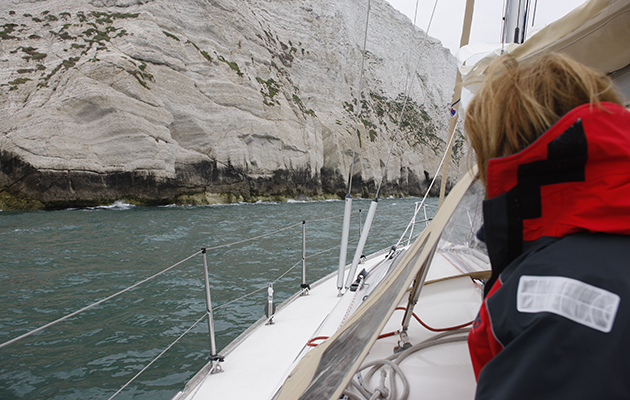James Stevens answers your questions of seamanship - this month, can you help another crew in distress?
Can you help another crew in distress?
Question:
Bob is on a coastal passage with three friends on board Azimuth, his Hallberg Rassy 342, a 10m cruising yacht fully kitted out for offshore cruising.
Bob is an experienced sailor, a commercially endorsed yachtmaster and former senior dinghy instructor. His crew has sailed with him for years.
They are working their way round a headland with a very steep and menacing cliff.
The wind is about 20 knots directly onshore, so Bob is trying to balance getting close inshore to avoid the tidal race to seaward with due respect for a lee shore.
They hear screams for help. Under the cliffs a small motor boat is breaking up on the rocks as the seas pound the cliff.
There are at least four people, two of whom have been knocked into the water.
Bob immediately sends a Mayday relay to the Coastguard. Help will arrive but how long will it be?
In the meantime the crew of the motorboat could drown.
Do Bob and his crew have to stand by and watch this tragedy unfold or is there anything they can do?
Answer
It is clearly too dangerous to attempt to bring Azimuth to the base of the cliff on a lee shore as there are likely to be offlying rocks which could sink even a strongly built yacht.
They need to drop the sails and float something down to the casualties.

To do this Bob has to take Azimuth in as close as he dares, holding her stern to the wind.
This is much more stable than bow to wind as Bob will know from his dinghy instructor rescue boat days, but they are going to take some waves into the cockpit.

James Stevens, author of the Yachtmaster Handbook, spent 10 years as the RYA’s Training Manager and Yachtmaster Chief Examiner
If the dinghy is readily available they could float it down on a long warp from Azimuth’s bow. If not, they could inflate the liferaft.
Jim’s training would have told him that a skipper should never deploy the liferaft unless it’s time to abandon the yacht, but with people dying a short distance away, desperate measures are needed.
Bob reasons that if the worst happens to Azimuth, the liferaft is there waiting.
They need to position the yacht upwind and uptide of the casualty. The liferaft has ballast pockets so will drift downwind more slowly than a dinghy.
But with skilful helming and lots of warp on the painter they should be able to position it close enough for the casualties to climb in or at least hang on to the external lifelines.
Bob can then motor astern to pull them away from danger.
By this time hopefully help will have arrived, if not the foredeck crew can either pull or winch the raft back to the boat.
This is a difficult and risky manoeuvre which requires a high level of skill and it still might fail.
On the other hand everyone has a duty to try to assist their fellow mariner.
Enjoyed reading Could you help these mariners in distress?
A subscription to Yachting Monthly magazine costs around 40% less than the cover price.
Print and digital editions are available through Magazines Direct – where you can also find the latest deals.
YM is packed with information to help you get the most from your time on the water.
-
-
- Take your seamanship to the next level with tips, advice and skills from our experts
- Impartial in-depth reviews of the latest yachts and equipment
- Cruising guides to help you reach those dream destinations
-
Follow us on Facebook, Twitter and Instagram.





